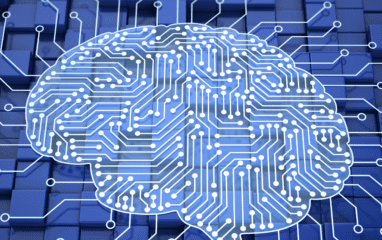Artificial intelligence (AI) is no longer a futuristic fantasy; it’s rapidly transforming the security landscape, making our businesses, homes, and public spaces safer and more secure. From intelligent cameras that can identify threats to predictive analytics that can prevent incidents before they occur, AI is revolutionizing the way we approach security.
How AI is Enhancing Security:
- Smarter Video Analytics: AI-powered video analytics go beyond basic motion detection. They can analyze video footage in real-time to identify specific objects (people, vehicles, animals), detect unusual behaviour (loitering, trespassing, fighting), and trigger alerts for proactive security responses.
- Facial Recognition: AI-powered facial recognition systems can identify individuals in real-time, allowing for access control, visitor management, and even the detection of persons of interest.
- Predictive Analytics: AI algorithms can analyze historical data and identify patterns to predict potential security threats, enabling proactive measures to prevent incidents before they occur.
- Automated Threat Response: AI can automate certain security responses, such as locking doors, activating alarms, or sending notifications to security personnel, improving response times and minimizing human error.
- Enhanced Efficiency and Accuracy: AI can automate tedious tasks, such as video monitoring and data analysis, freeing up security personnel to focus on more critical tasks and improving overall efficiency and accuracy.
Examples of AI in Security:
- AI-powered cameras: Cameras that can detect and classify objects, identify unusual behaviour, and even recognize faces.
- Smart access control systems: Systems that use facial recognition or other biometric data to grant access to authorized individuals.
- Predictive security platforms: Platforms that analyze data from various sources to predict potential security threats and recommend proactive measures.
- Autonomous security robots: Robots that can patrol premises, detect anomalies, and provide real-time alerts.
Benefits of AI in Security:
- Proactive Threat Detection: AI enables proactive identification and mitigation of potential threats, preventing incidents before they occur.
- Enhanced Situational Awareness: AI provides real-time insights and alerts, improving situational awareness and enabling faster response times.
- Increased Efficiency and Productivity: AI automates tasks, freeing up security personnel and improving operational efficiency.
- Improved Accuracy and Reduced Errors: AI algorithms can analyze data more accurately and consistently than humans, reducing errors and improving decision-making.
- Cost Savings: AI can help reduce security costs by optimizing resource allocation, preventing losses, and improving operational efficiency.
NEO Security and AI-Powered Solutions:
NEO Security is committed to staying at the forefront of security technology. We offer a range of AI-powered security solutions, including intelligent cameras, access control systems, and video analytics platforms, to help our clients enhance their security posture and protect their assets.








